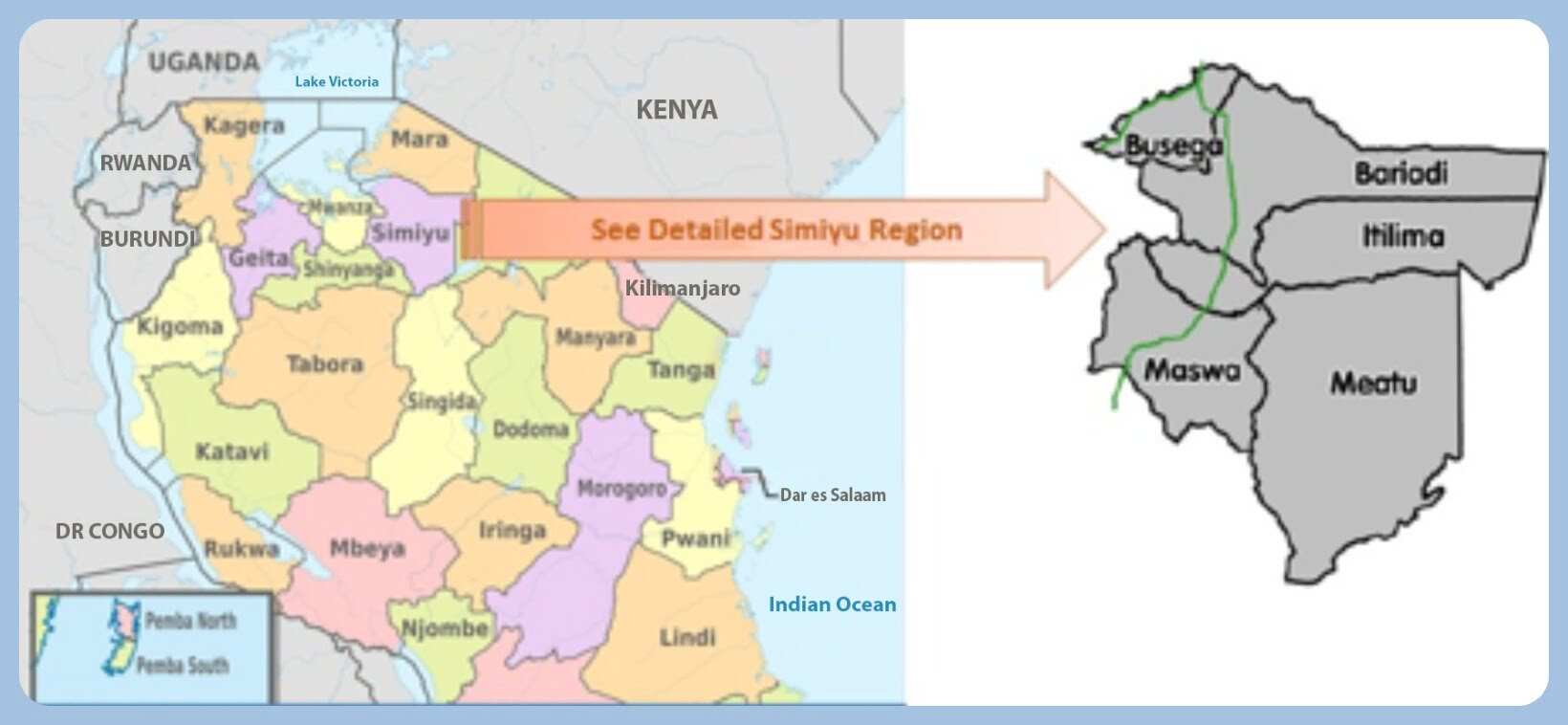The Simiyu Region is largely affected by climate change. Impacts include profound changes in water availability, temperature stresses to people, livestock and crops, changes in public health, farming practices, income, food security and ecology. Climate models predict a further intensification of dry seasons, but also unpredictable intense rains and floods, posing a significant threat to livelihoods, especially amongst the poor. For the population, and women are particularly negatively affected, these developments present increasing challenges for day-to-day life, with insufficient local water supply, worsening health conditions and deteriorating (subsistence) farming opportunities posing particular threats.
The total population is about 1.8 million (deduced from 2012 National Population and Housing Census, annual growth rate 1.8%). Cereal production forms the Region’s economic base, it is still conducted by traditional measures in which farmers use old technologies and low levels of fertilizers. Cattle are used for farming activities. Simiyu Region ranks far below the national average with regard to socio-economic indicators including adult literacy, population growth (due to significant migration to other regions), percentage of female headed households, households with electricity, with water supply and toilet facility, or percentage of residents with birth certificate (as indicator for coverage by formal government).

Water supply has always been a major threat to the region. Only about 68% of the urban and 46% of the rural population in the area have access to improved, clean drinking water (Ipsos, 2019). Due to climate change, the situation is expected to worsen; the surface water sources, which are being used informally due to the lack of improved water sources, are reportedly falling dry for longer periods than in the past. Climate models generally predict a further increase of dry seasons, posing a significant threat to livelihoods, especially of the poor.
Furthermore, strong rains during the wet season have increased and will further increase according to climate change models. This leads to increased health risks for the people. Without proper drainage and sanitation facilities, the increased number and intensity of rainfalls and floods will lead to more often contaminated surface water. In combination with the fact that water is used without treatment by the biggest part of the population, the exposure to waterborne diseases is increasing. Also, the minor existing water supply infrastructure is either under stress or completely dysfunctional due to the extreme weather conditions. In some recent cases, existing infrastructure like dams, water treatment plants and power lines were destroyed during the floods.
At the national level, inter-ministerial coordination on adaptation to climate change as well as generation and use of climate information data in decision making need to be strengthened. New rules and regulations could facilitate cross-sectoral and multi-level implementation.
The Simiyu Climate Resilience Project (SCRP) is expected to increase the climate resilience of rural and urban households, particularly small-scale farmers and women and to improve policies and regulations for cross-sectoral action towards climate change adaptation. In total, 495,000 people shall directly benefit from the measures (257,000 of them being women), plus 2.5 million indirect beneficiaries by trigger effects and further projects. It is anticipated that about 95,000 persons in the three urban centres and about 300,000 persons living in the selected villages located within the 24-km wide corridor will benefit from the improved supply of drinking water. Additionally, a significantly higher number of persons will benefit from SCRP indirectly. The planned investments and interventions of SCRP are focused on water supply, small-scale irrigation, climate-adapted agriculture practices, and sanitation and hygiene practices.







